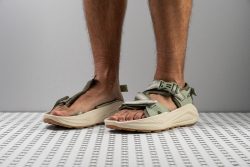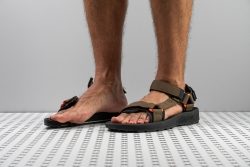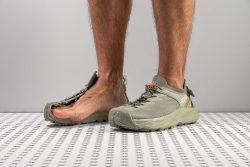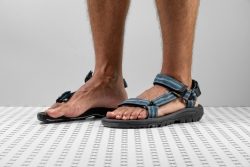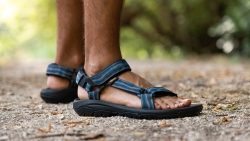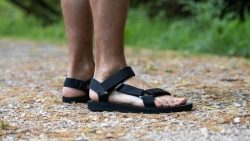4 Hiking Sandals With The Best Shock Absorption in 2025
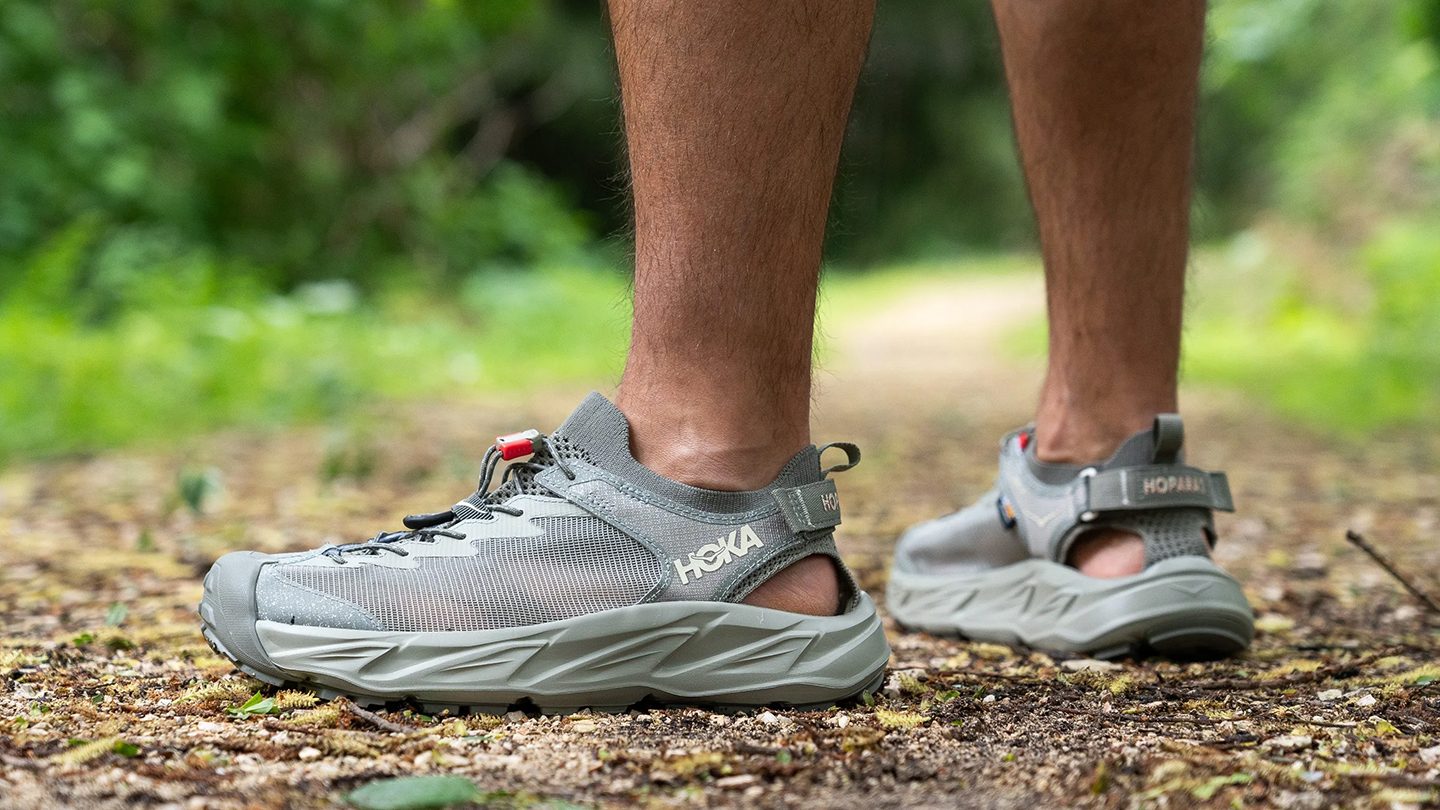
We buy shoes ourselves. We earn commissions when you buy through us, at no extra cost. Why trust us
When hiking in sandals, many of us worry first about protection (closed-toe or open-toe) and whether the fit is customizable so that the proper lockdown can be achieved. However, it’s the shock absorption that cushions the impact at each landing, and in this guide, we cover when you should look for that feature and when you’re OK without it. We also lay out our top picks that made the cut based on both our test hikes and lab tests!
How we test Hiking sandals with the shock absorption
Testing the hiking sandals means we stick to the same routine as with any other category. And that means:
- We buy all the hiking sandals with our own money; we don’t get new releases in advance or ever. It’s our decision when we purchase the sandals and why. You can read more about that on our Pipeline page.
- All the hiking sandals are submitted to the same testing process: test hikes and tests in the lab. The testing protocol we follow to test shock absorption is called ASTM F1976. We follow it to the letter by dropping a mass of 8.5 kg from a height of 50 mm onto the heel at exactly 12% of the internal shoe length. This action has a total energy input of 5J.
- We perform 30 repetitions total with a 2-second break between each. The first 25 repetitions are simulating a natural break-in of the sandal, and the last 5 are used for our lab measurements – we calculate the average and publish the result.
- Once done with testing, we select a very few top picks that shine brighter than the rest in different categories.
- All the test results are published on our website and you can use them to compare hiking sandals across different features.
Best hiking sandals with high shock absorption overall
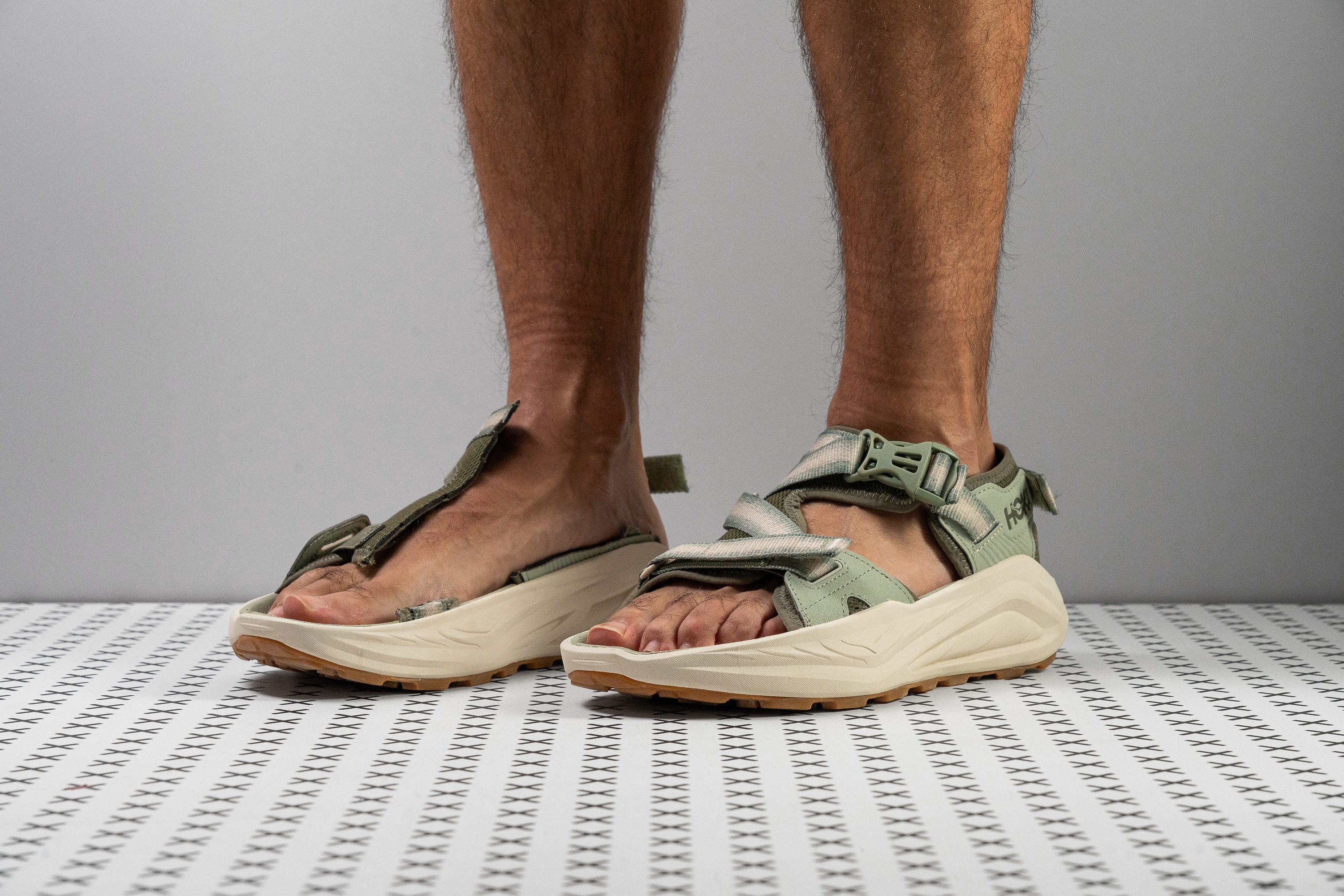





























What makes it the best?
Pros
- Unbelievable cushioning and shock absorption
- Lively and dynamic ride
- Isolation from trail debris
- Excellent outsole traction
- Very light for its cushioning
- Stable for a sandal
- Promising outsole durability
- Can be re-soled by Vibram
Cons
- Not for narrow feet
- Not for technical hikes
Most versatile hiking sandals with high shock absorption
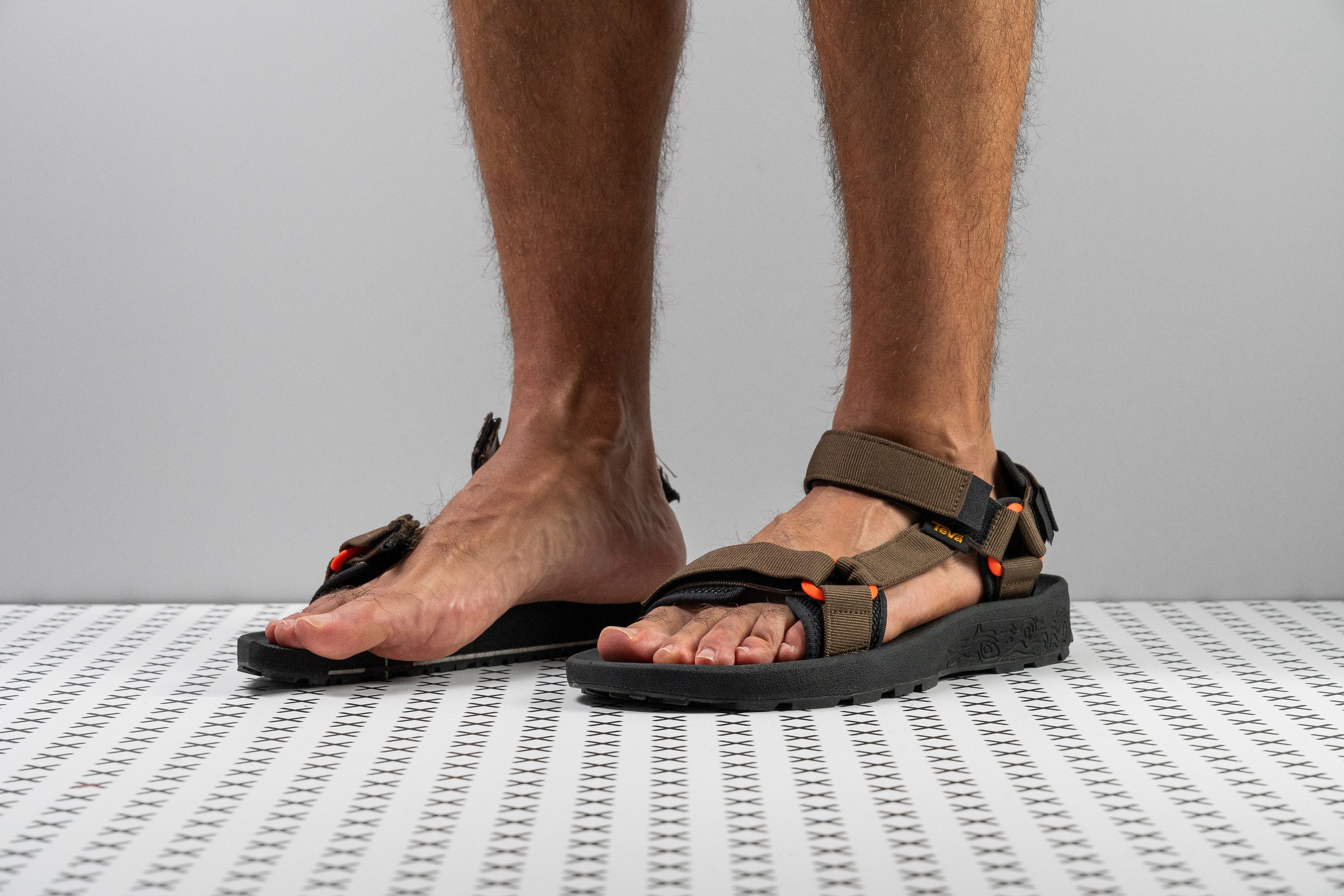

































What makes it the most versatile?
Pros
- Versatile: water activities, light hiking, casual
- Great value for money
- Comfortable softer cushioning
- Wide and stable platform
- Enhanced grip on wet surfaces
- Very flexible construction
- Padded straps prevent blisters
- A high % of recycled components
Cons
- Mud gets stuck between lugs
- Fiddly when putting on (pads fold over)
Best high shock absorption hiking sandals for water hiking
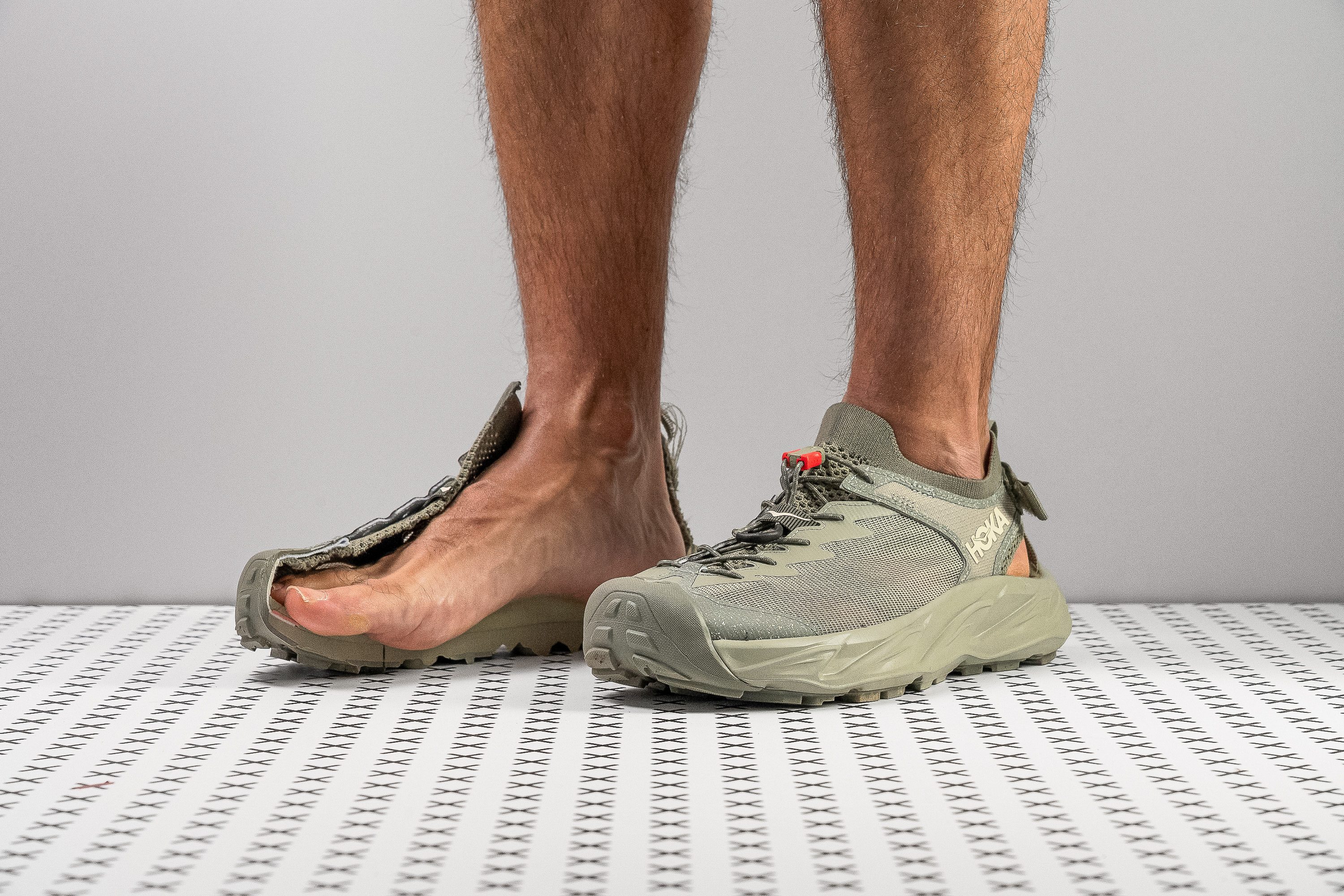















































What makes it the best?
Pros
- Comfortable cushioning
- Highly durable construction
- Light for a closed-toe sandal
- Unmatched cushioning and impact protection
- Feels stable and grounded
- Fantastic grip on slippery surfaces
- Plenty of toe room
- Sustainable materials
Cons
- Traps sand easily
- Not for narrow feet
- Color discrepancy
Hiking shoes with high shock absorption with the best value
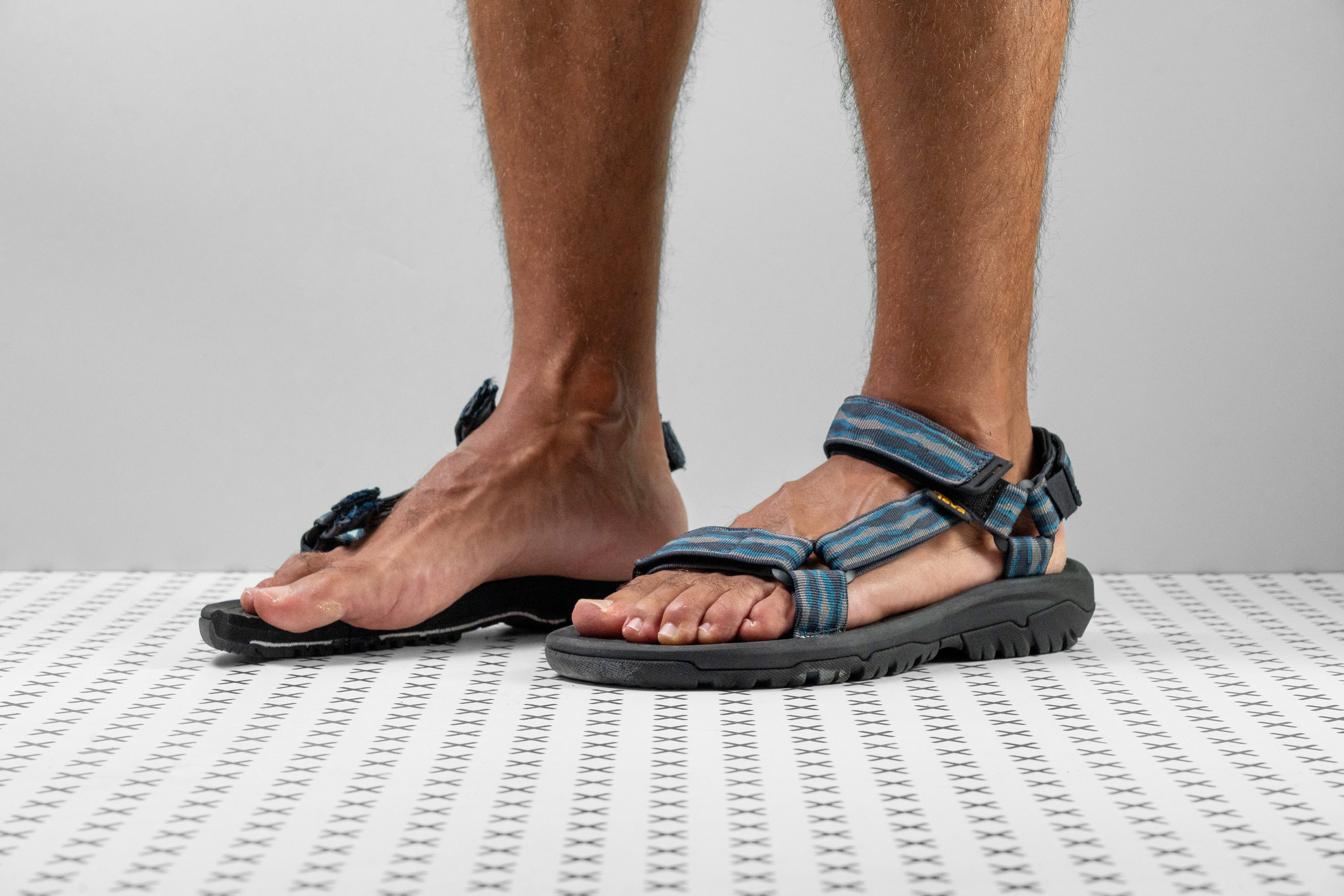






























What makes it the best?
Pros
- Highly versatile
- Well-cushioned
- Supportive footbed
- Durable for the price
- Grippy outsole
- Customizable fit
- Lightweight
- Quick-drying
- Affordable
Cons
- No toe protection
- Runs a little large
Shock absorption is the midsole’s ability to dampen the impact. Hiking sandals with high shock absorption are very good at absorbing the impact at the landing, which means the midsole is doing its job well and, therefore, your legs don’t have to work extra. When the shock absorption is low, more stress is sent toward the legs.
However, while this may sound dramatic, it is important to take into account the impact forces. When a person is running, they hit the ground with a force 2-3x their body weight. When hiking, those forces are significantly lower, which is why shock absorption is not the most talked-about feature in hiking.
Who high shock absorption is good for
We mentioned above that shock absorption is less important in hiking than, say, in running, but that does not mean that it’s not relevant at all. On the contrary. Midsoles with good shock absorption feel comfortable because they are cushioned and they feel even better on the longer hikes. This is when the impact forces accumulate, and it’s better when the midsole handles the majority of them and not your legs.

|
From this, we can conclude that high shock absorption is recommended for hikers who are heavy (their impact forces are higher) and who hike longer distances (when those forces accumulate and could cause premature muscle fatigue). Of course, there’s a caveat: heavy hikers can not disregard other important features like stability and support. |
3 features of hiking sandals with high shock absorption
Before deciding on purchasing these sandals, here are the most important features to keep in mind:
- Sandals that have high shock absorption scored 110 SA or higher on our shock absorption lab test.
- You can’t walk into a store, take sandals into your hands, and eyeball their shock absorption. This has to be measured in the lab. Not even putting them on and experiencing their out-of-the-box comfort is not a bulletproof indicator of the sandal’s shock absorption.
- In general, hiking sandals with a higher shock absorption also have higher stack heights (more foam is needed if we want the impact to be properly absorbed).
Correlation between softness, stack height, and shock absorption in hiking sandals
Softness of the midsole is what we all relate to comfort. In our lab, we measure the softness after cutting the sandal in half lengthwise and sticking the durometer needle into the (raw side of the) midsole.
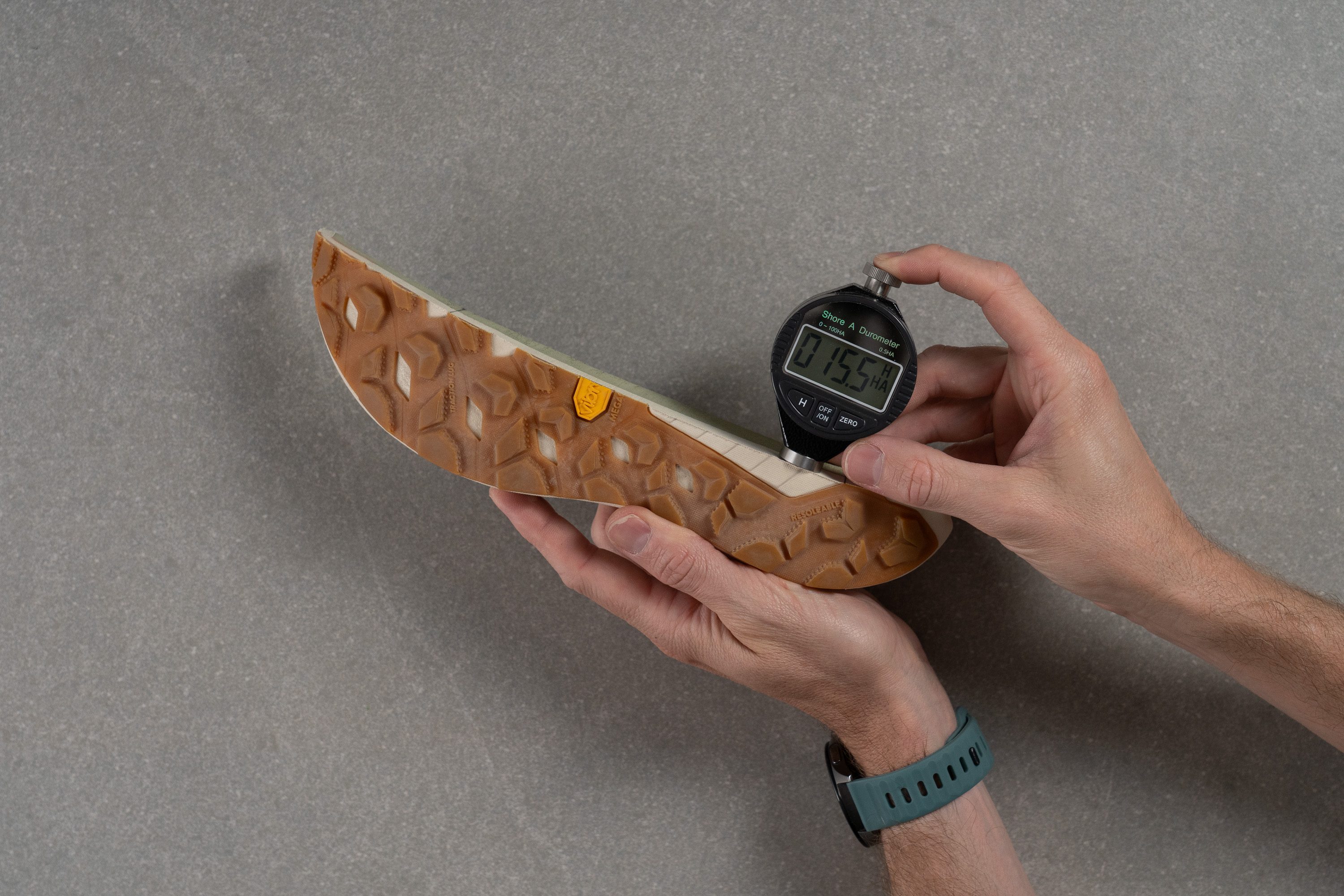
The lower the reading on the durometer display, the softer the foam. However, that instant softness is only that: instant. Shock absorption tells us whether the sandal will be kind to our legs after a while, which is especially important when you plan to do longer hikes.
While higher shock absorption often means softer midsoles, this is not a strict rule and there’s no clear 100% correlation. Look at the example below.
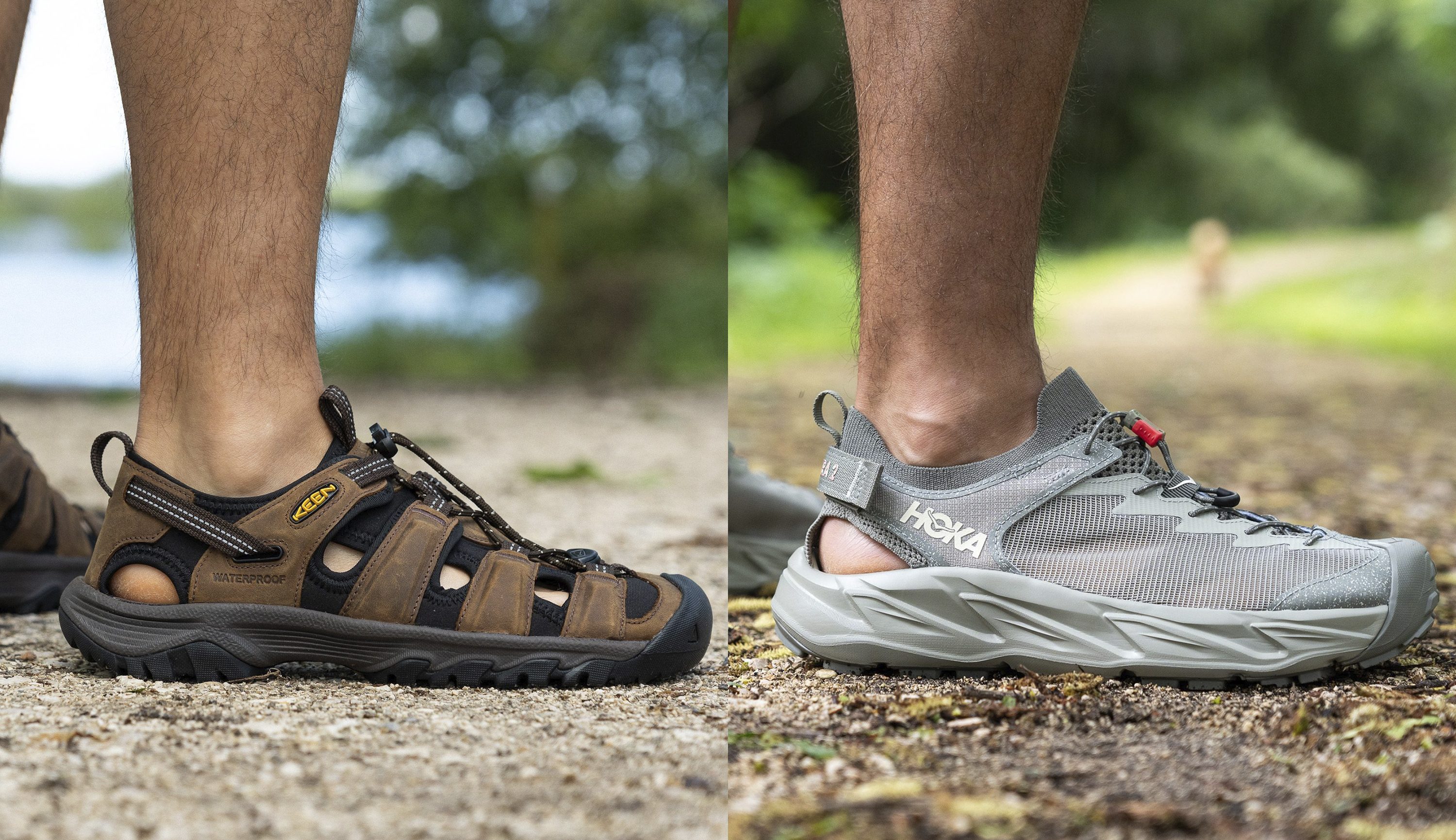
What we can say is that, in general, high shock absorption requires a higher stack height. Simply, there has to be enough of the midsole for it to properly dampen the impact. Some thin layers of the foam are not enough. Let’s give an illustrative example again.
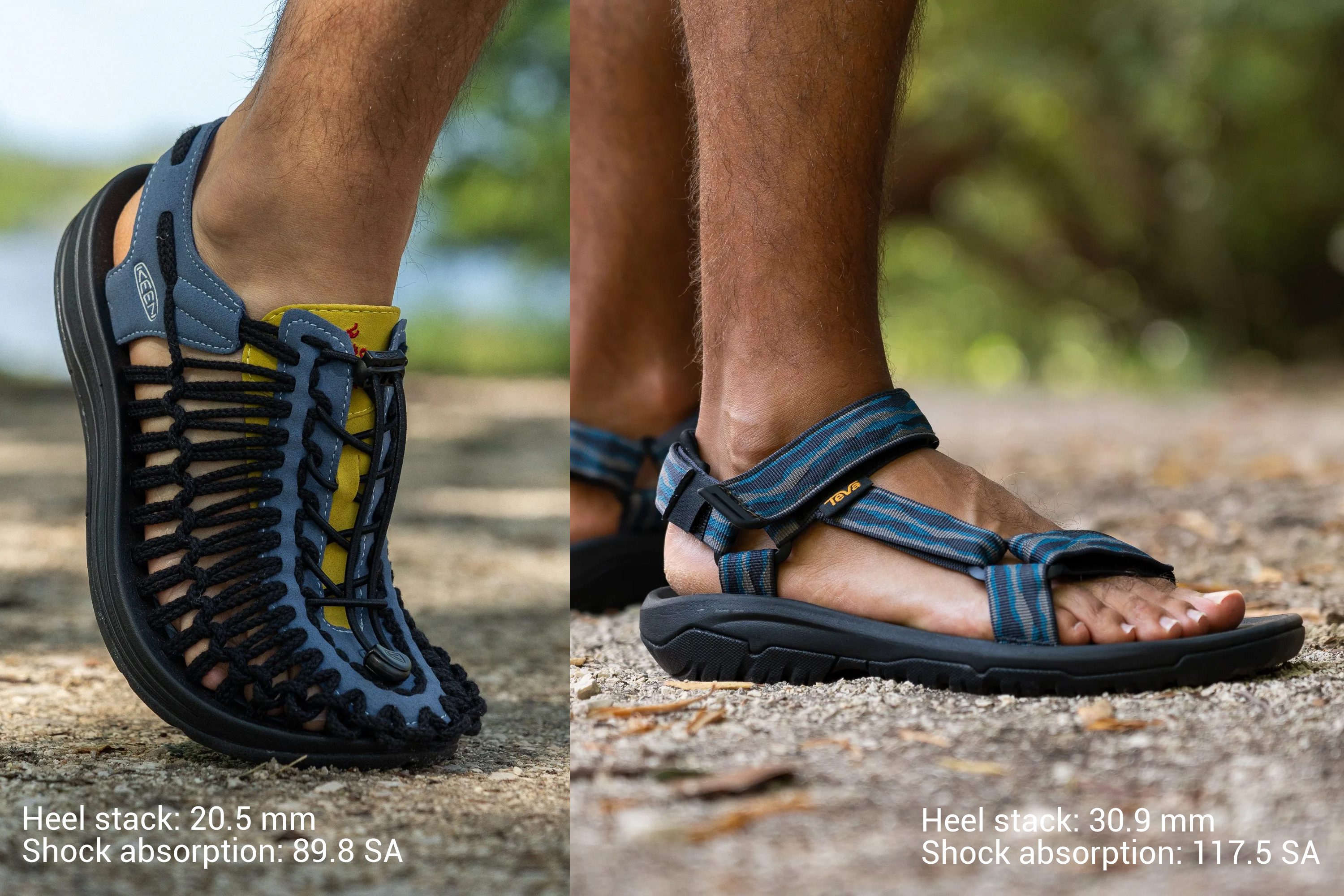
The shoe on the left is low to the ground and has low shock absorption, unlike the shoe on the right, which is high-stacked and has high shock absorption
Energy return in hiking sandals with high shock absorption
Energy return is highly relevant in running because running shoes with sky-high energy return allow the runners to run faster and to stay fresh for longer (great energy return and shock absorption are so-called leg-saving features). However, in hiking, given the wildly different pace at which we move, energy return is definitely not at the top.
Energy return tells us how good the midsole is at bouncing back after it’s been landed on. Or, how much of the energy is returned after a chunk of it has been spent on heat and deformation
However, it should not be disregarded. Especially if you love hiking fast and light! You don’t want a midsole to be bothersome and dull. Such a midsole will make your legs work more and that’s surely felt when you’re pushing harder and faster.
Why low shock absorption is NOT a deal breaker
There’s a time and place for everything and that applies to shock absorption as well. Low shock absorption is inevitable in hiking sandals that have other priorities.
Barefoot, minimalist, or simply low-to-the-ground sandals don’t have a midsole layer thick enough to accomplish high shock absorption. But hikers still decide to wear these because they want a more natural feeling, better ground contact (ground feel), they want to strengthen different foot muscles, which is only possible in low-stacked footwear, etc.
Per our lab tests, we classify sandals under low shock absorption when they score lower than 95 SA on our test, and under medium shock absorption when they score between 95 and 110 SA.

